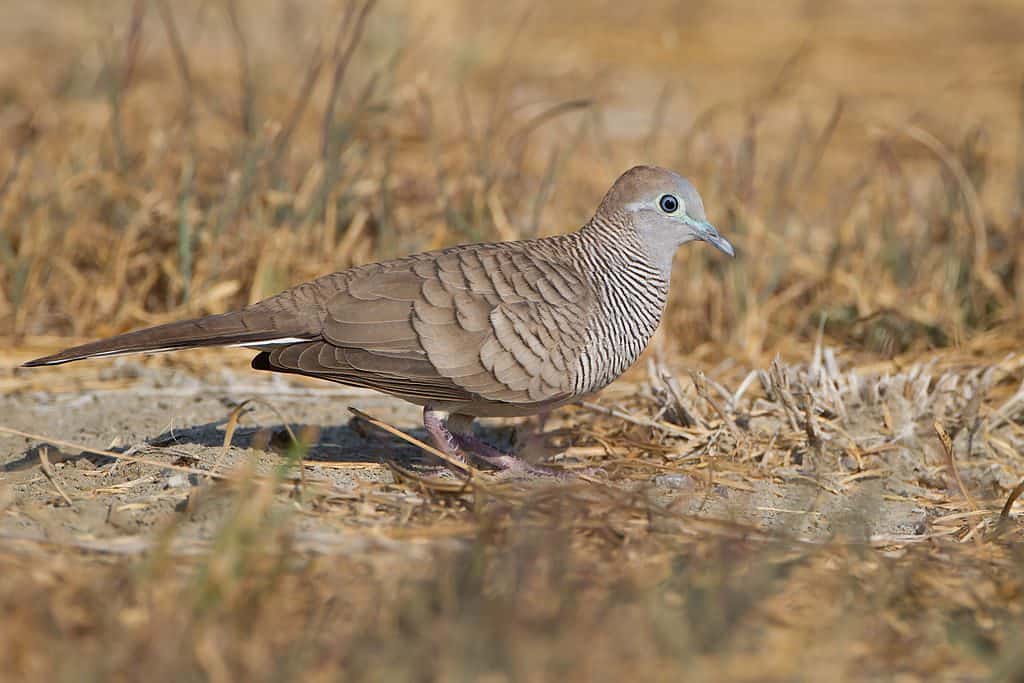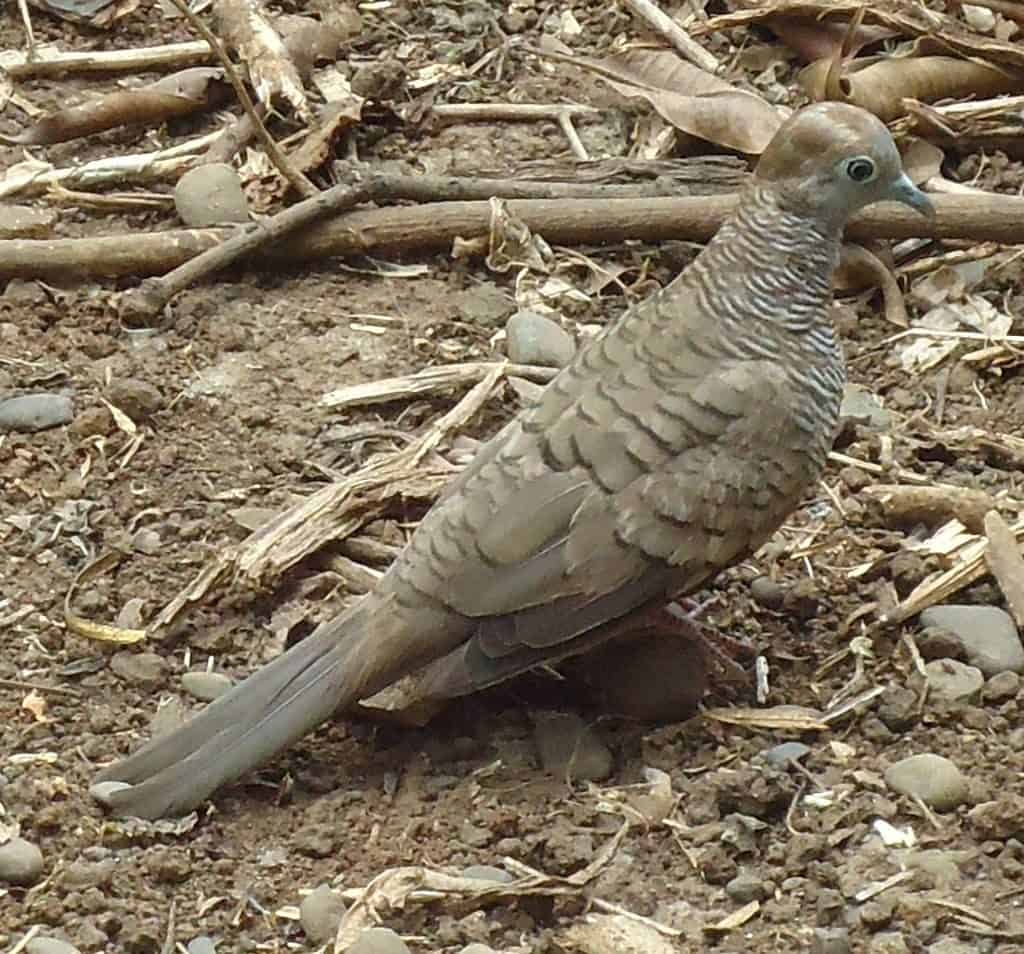For many bird keepers, the journey into keeping doves and pigeons start with the diamond dove. But once you have experience with them, there can be the urge to try something different. One species that is commonly kept in some parts of the world is the zebra dove – but is it an aviary alternative to the diamond dove?
Zebra dove overview
The zebra dove (Geopelia striata) is also known as the barred ground dove and is a bird of south-east Asia. They are in the same family as the diamond dove as well as the Peaceful dove, barred dove and bar-shouldered dove, although the latter three are seen as subspecies of the zebra dove by some experts.

Description
The zebra dove is a little bigger than the diamond dove – around 50-60 grams versus the 28-40 grams of the diamond. This makes them appear shorter and stubbier than the diamond but still have a long tail. They are 20-23cm in length and have a wingspan of 24-26cm.
They have brownish grey upperparts with the black and white barring that gives them their name. The underparts have a pinkish tinge to them with black bars on the side of the neck, belly and breast. The face is blue-grey and there is an eye ring of skin. Tail feathers have a white tip. Juveniles are duller and paler in colour.
Keeping zebra doves
Personally, I don’t have an experience yet with these lovely birds so I refer to others who do. There’s a good article on www.diamonddove.info on the species. They describe them as being calm and quiet in captivity, birds that like to sit somewhere off to the side and don’t move around for a while. This makes some people describe them as not very interesting in an aviary but obviously, this is a matter of opinion. Others say they are quite active and can be a little territorial around their nest, chasing other doves away from it.
In the wild, zebra doves feed on small seeds and weed seeds as well as some insects and small invertebrates. They are ground foragers who will go to bare ground or even on roads to collect food and walk around in a rodent-like fashion. Their plumage helps disguise them against the bare ground. Normally, they are seen in pairs or alone rather than in groups when foraging.

Breeding
Zebra doves pair for life and are very devoted to each other. The male courtship is similar to other doves, circling the hen, bowing and cooing while fanning out his tail feathers – always an impressive sight even for us non-doves!
Like the diamond dove, they are also not the best at building nests and often add a few pieces of nesting material on a tree branch. Therefore, it can be good to provide platforms or baskets for them to build on and this makes for a sturdier nest. They lay one or two eggs and both birds incubate the egg for 11-13 days, so similar to the diamond dove. Young fledge at around 10 days and sometimes don’t fly straight away so will be seen running around the floor of their enclosure. They can be fed by the parents for up to a month after fledging.